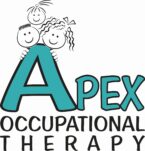Pros and Cons of Handwriting Programs
Are you home schooling or looking for something formal to support your child with their handwriting? Here are some structured programs that teach children how to make letters. We haven’t tried them all, but here are some options:
Handwriting Without Tears (now called Learning Without Tears)
Children learn letters and numbers using pictures and consistent language cues. Letters are taught in an organized way so that those with similar shapes are taught together. They now have digital options, with online instruction and interactive tools.
What we like:
Developed by an occupational therapist, this teaches handwriting in a developmental sequence. It makes sense to start with upper case letter first which have mostly straight lines and wide curves. The language to describe the lines and curves can be helpful to children. There are songs associated with the program that children remember. It includes pre-writing activities to help children in preschool develop foundational skills for making letters.
What we don’t like:
The paper doesn’t easily translate well to what is typically used at school. Children with motor planning issues may struggle to transition from writing their name in all upper case letters to lower case letters. Some of the language doesn’t make sense to kids. (e as an example)
Ms. Marnie teaches children how to make letters through short videos. She uses rhythmic chants, demonstration, and a lot of repetition to help children learn.
What we like:
Miss Marnie is really corny, but fun and the kids love her. The repetitive and rhythmic way of teaching has worked well with many students. They have an ipad app with lower case letters. It used to be on DVDs, but is now streamed for easy access.
What we don’t like:
For some letters the chant is too long, but those are ones with directional changes that tend to be more difficult.
Fundations is actually a literacy program that has a handwriting component. Children get taught in how to make each letter while learning letter sounds.
What we like:
We love the paper and the pictures that help children size their letters. Letters are organized by size. The program works well in some schools because it combined literacy with handwriting.
What we don’t like:
For some children there are too many lines on the page. (we simplify it by color coding them when needed, but also adapted paper to take out one of the lines). There is too much language to describe how to make the letters, so children with attention issues or those with language delays may have difficulty following or staying focused on the instruction.
Size Matters Handwriting Program
This was created by an occupational therapist and other OTs have said good things about it. Handwriting legibility improves a lot when letter size is addressed. Although we haven’t used this program, we have adapted elements from the programs we’ve mentioned to address sizing (Fundations is especially good for this) which has helped children learn to make letters so they are sized right.
So, have you been able to tell which one is our favorite? Well, we really can’t pick just one because we love elements from all of the ones we use. For school age children we love to combine the TV Teacher with Fundations and for preschoolers we use Learning Without Tears more often. However, what we use can depend on the child and what resonates with them. We have many other strategies and tools that we use that aren’t part of formal handwriting programs. Keep in mind that we tend to work primarily with children who struggle to learn the skill of making letters, so if this is not an issue for your child then you may also want to explore some of the more traditional handwriting programs like Zaner-Bloser or D’Nealian.

